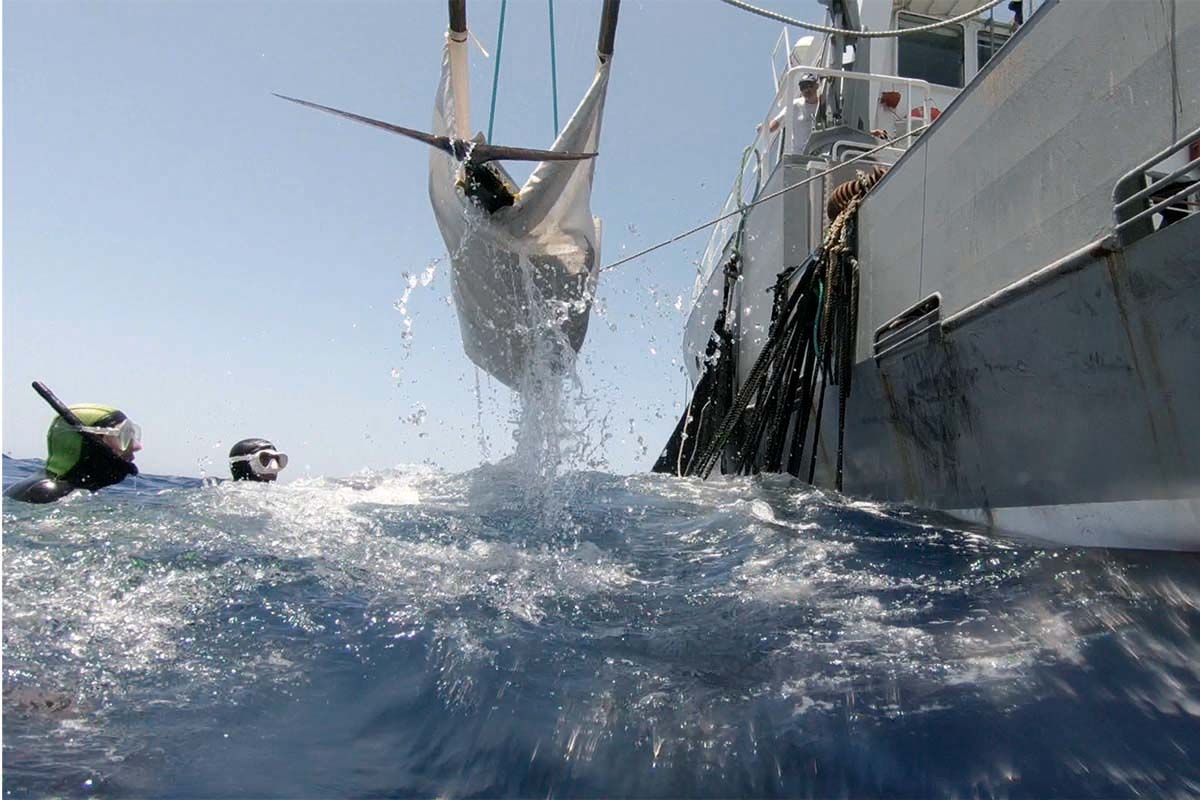[LUM#14] In harmony with bluefin tuna
A tireless traveler, bluefin tuna swim thousands of kilometers during their lifetime. What does it do during its travels? To lift the veil on the private life of this large fish and better understand the dynamics of its population, marine biologists and microelectronics researchers microelectronics are working together.

It can grow to over 3 meters and weigh more than 600 kilograms, "the size of a cow." It lives for nearly 40 years and can travel up to 200 kilometers in a day. Bluefin tuna is a migratory fish whose name has long been associated with overfishing, but which is now doing well. "Atlantic bluefin tuna was overfished from the mid-1990s onwards, but since 2012 stocks have been improving, " explains Tristan Rouyer. Overfished, yet still little known. "There is still much we don't know about the dynamics of tuna populations," says the researcher from the Marine Biodiversity, Exploitation and Conservation Laboratory (Marbec*). The reason? The difficulty of tracking such a large and mobile animal.
"To study wild animals such as bluefin tuna in their natural environment, we use electronic tagging," explains Vincent Kerzérho. The problem is that the systems used to track fish are very expensive. "Between €3,000 and €4,000 per animal," says the researcher from the Montpellier Laboratory of Computer Science, Robotics and Microelectronics (LIRMM**). That's a hefty budget for a single-use device. "And a significant obstacle when you consider that studying a population on a large scale requires collecting a lot of data." To overcome these difficulties and improve our knowledge of these large fish, researchers from the two laboratories decided to work together.
Fishing for experts
A collaboration that began in 2015 with the Popstar and FishNship projects. "We set out to find experts in microelectronics to develop new solutions, " recalls Tristan Rouyer. Together with his colleague fromIfremer, Sylvain Bonhommeau, the biologist went fishing for collaborators and hooked up with Serge Bernard and Vincent Kerzérho's team at LIRMM. "The contact went very well, both scientifically and personally."
Their mission? To develop cheaper and more comprehensive tagging devices. "Commercially available devices only have three sensors to measure pressure, temperature, and light in order to determine the fish's position, " explains Vincent Kerzérho. While these measurements make it possible to track the movements of tuna, they do not provide any information about the animal's physiology. "We know where it is, but we don't know what it's doing there. Is it hunting? Reproducing? Is it building up reserves or consuming them? Yet this information is crucial to understanding the life cycle of tuna and their migratory dynamics," explains Tristan Rouyer (see box).
Libra in Pisces
Microelectronics specialists have therefore developed a new sensor that not only geolocates fish but also provides information on their fat content. "We use bioimpedance, a technique developed by the medical community, the same one used for scales that measure fat content. " The sensors must also be able to withstand a hostile environment, salt water, and the pressure that prevails at depths of up to 1,000 meters, where tuna frequently venture. And they must also meet the challenge of autonomy. "Tuna spend a lot of time at depth, which makes continuous data transmission impossible. So we designed a system that detaches itself after 6 months to a year. It then rises to the surface where it finally transmits the information it has collected, " explains Vincent Kerzérho.
Precise timing
The technical challenge was met with a microelectronic device measuring just a few square millimeters, connected to electrodes that had to be implanted in the fish's flesh. That's where another challenge began... Because , as Tristan Rouyer points out, "tagging a 250-kilogram tuna is complicated." And for good reason: you have to get this enormous fish out of the water. "We did this with the help of the SATHOAN fishermen from Sète." Tuna fishing is done with a seine, a huge net that boats use to encircle schools of fish. Researchers take advantage of this to capture individuals during a carefully timed operation. A line with a hook is thrown into the seine net, and any tuna that bites is hoisted on board in a stretcher and intubated on the boat, where it spends less than two minutes, "just enough time to deploy the equipment." The animal is then released and continues on its way, with the researchers in its wake .
Transatlantic
Since 2018, scientists have tagged eight tuna, gathering valuable data. "One of the tuna tagged in the Mediterranean traveled to southern Iceland and then to Canada before crossing the Atlantic again and returning to the Mediterranean, " explains Tristan Rouyer. This year-long journey has provided more detailed information about the migratory routes taken by these great travelers.
And this is just the beginning: researchers want to tag more tuna to gather even more data. "This information is invaluable, because a better understanding of the migratory dynamics of these populations allows us to better understand how they use their habitat, particularly in relation to environmental conditions," explains Tristan Rouyer, who also emphasizes the importance of this knowledge in anticipating potential changes linked, for example, to global warming. "The more we know about the species, the better we can preserve it."
Long-distance migrant
A long-distance traveler, the bluefin tuna has long kept its routes a secret. Its migrations serve two essential purposes: feeding and reproduction. "The bluefin tuna reproduces in the warm waters of the Mediterranean. Outside this breeding area, it scours the colder waters of the Atlantic for food, traveling as far north as the Norwegian and Canadian coasts, where it hunts herring and mackerel," explains Tristan Rouyer. It is then able to gain 30% to 40% of its body weight, which it subsequently loses during the breeding season.
See also
*Marbec (UM – CNRS – IRD – Ifremer)
**Lirmm (UM – CNRS)